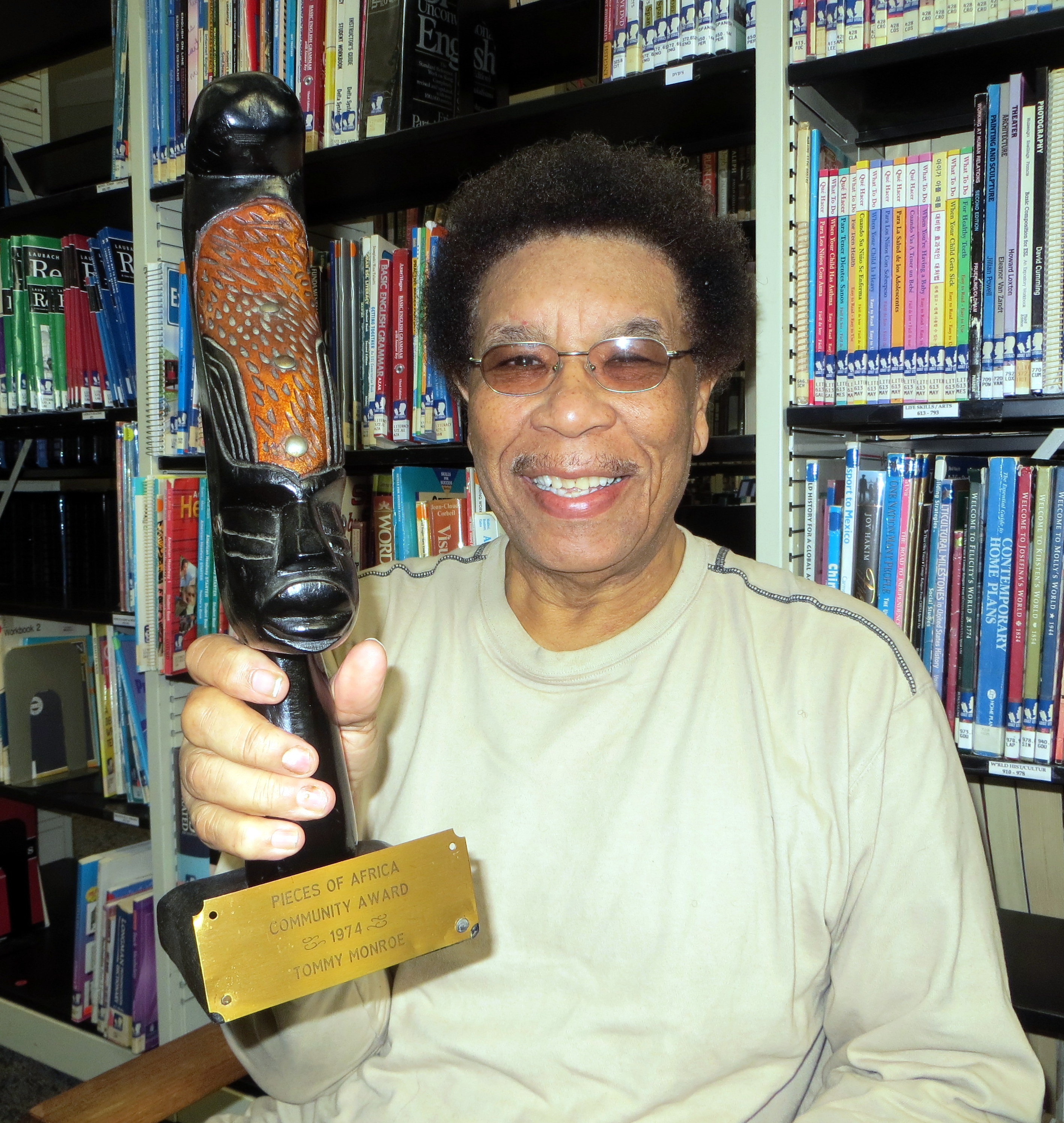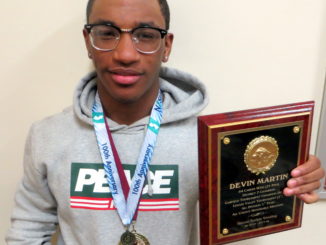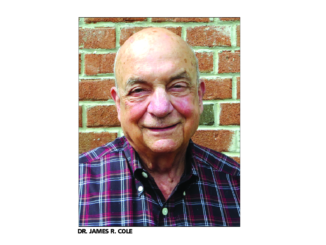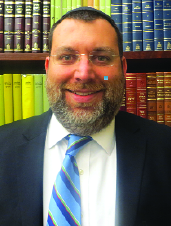
BY HILLARY VIDERS
SPECIAL TO NORTHERN VALLEY PRESS
ENGLEWOOD, N.J.—Thomas “Moose” Monroe was born in Harlem, New York and was supported by his grandmother, Shottie Edwards and raised by his foster mother, Annie Robinson in Englewood.
Having lived most of his life in Englewood, Monore is a treasure trove of information about the city, and as such, is a valued member of the Englewood Historic Society.
Widely known to many as “Coach” or “Moose,” Monroe graduated from Dwight Morrow High School in 1960, where he earned a basketball scholarship to Norfolk State University in Virginia. He was majoring in health and physical education when family illness compelled him to leave shortly before graduation.
In 1965 Monroe went to work for Xerox; he was able to return to Norfolk and quickly complete his education requirements and graduate in 1968.
Monroe’s first job after graduation was administrator of the legendary Englewood Memorial House (founded in 1898), now Bergen Family Center. In that position, he supervised the Cub Scouts and Boy Scouts and the daycare program with 100 children, 10 counselors, and a private nurse.
In 1973, Monroe joined the staff at Janis Dismus Middle School as a health and physical education teacher. In 1985, he transferred to teach at Dwight Morrow High School, where he served as a health and physical education teacher, as well as football, basketball and track and field coach.
While on the staff of DMHS, Monroe was liaison for the Ryan White Foundation, where he provided counseling regarding AIDS medicine and nutrition.
Monroe is notable for having started chess programs at DMHS, Dismus Middle School and several elementary schools, where he taught students to play and compete. He returned to Dismus Middle School in 1990 as a teacher.
Throughout the years, Monroe played semi-pro basketball, supervised summer programs for the Englewood Recreation Department, and conducted summer basketball leagues. He was the Cub Scout and Boy Scout institutional representative with the teen evening program at Memorial House.
After a career of 31 years in teaching, Monroe retired from the Englewood Public School System in 2004. He was called back in 2009 to be a founder in the establishment of The ZONE at Dwight Morrow High School. The ZONE is a state-funded, school-based, program that still is administered by Bergen Family Center. This unique and effective program was designed to help students with academics, trips and employment guidance. Englewood joined Hackensack and Teaneck as the only recipients of this state funding.
Monroe has been honored many times for his service to the community by The Bergen County chapter of the National Association for the Advancement of Colored Peoples’ Freedom Fund Award, Bergen Family Center Award, Shiloh Church Community Activists Award for his role in the desegregation of Englewood Public Schools, and The National Coalition of 100 Black Women Community Leadership Award.
Monroe has a solid role as patriarch. He and his late wife Evalina Jenkins Monroe, have two daughters, seven grandchildren and 18 great-grandchildren.
• • •
Hillary Viders: It’s a pleasure to speak with someone who has contributed so much to Englewood. A question that I have always wanted to ask you is how did you get the nickname Moose?
Tom Monroe: In 1949, when I lived on Williams Street, I was friends with the three Akridge brothers—Johnny, Joe and Donald. Back then, everybody gave each other nicknames, mostly after animals. One kid had 10 stray dogs, so we called him “Dog.” Since I was bigger than most of the kids my age, Joe said, “Hey, your name should be ‘Moose,’ because you’re big like a moose and your ears stick out!”
HV: When did you begin teaching?
TM: I started teaching in 1960, during the summers that I was home from college.
The famous Dr. Leroy McCloud took me under his wing and I took his place as supervisor of Mackay Park and oversaw games with the kids.
My first full time job was as a truant officer in the middle school as well as in the Lincoln School and the Roosevelt School. I made sure that the kids got to school on time, and if they played hooky, I’d visit their homes. I even went to court for 14 kids to make sure that they stayed in school.
HV: You taught physical education in both the Englewood middle school and high school in the 1970s and 1980s. What were the curricula like back then?
TM: I first taught sixth, seventh and eighth grade girls, and later both girls and boys. They all did the same sports—cross country running, soccer, basketball, football, volleyball and gymnastics. Some of the girls were excellent athletes and a few of them even made the football team.
HV: Do you think that youngsters today are better athletes than they were years ago?
TM: Nowadays, they have better technology and weight training programs. But the biggest difference is that when I was coaching, kids used to play three sports, whereas now they specialize and excel at just one sport. Like LeBron James, who was recruited in junior high school in Michigan.
One thing that I’d like to add is that I also taught health, and I was the first person in Bergen County this area to teach HIV/AIDS in the 1980s, through the Ryan White Foundation.
HV: In 1973, you started the chess program in Englewood’s high school, middle school and elementary schools. How did you go about making such a complex game understandable to 6 year olds?
TM: I related the chess pieces to real life situations that they could identify with. For example, pawns were the poor people in the neighborhood. They did all the hard work, and in a battle they were the soldiers on the front line. The castles or rooks were the strong foundation that could move a lot of spaces as once. The kids loved hearing about the knights because I told them about the Knights of the Round Table during the days of King Arthur. I told them that the bishop represented the church and that involved almost everything since the beginning of time. Then there was the king and queen. The king can move anyway he wants, but only one space at a time, whereas the queen can do every move, because the queen always takes care of the king.
I got my athletes involved in chess as well, because they had to have discipline, strategy and performance. I showed them that what they need to do on the chess board can apply to what they need to do on the playing field and in life.
HV: Do you still play chess?
TM: Absolutely! I have five chess sets in my car right now. Just yesterday, I was asked to start a chess program in the First Baptist Church of Englewood.
HV: Do you still participate in any sports today?
TM: I do circuit training, ride a bike and walk my Maltese, Rocky, every day.
HV: You grew up and have lived in Englewood’s Fourth Ward most of your life. What is the most significant change that you’ve seen there over the years?
TM: The ethnic distribution in the Fourth Ward has changed a lot. When I was growing up on Williams Street, the Fourth Ward, called Little Texas, had a mix of black, Italian, and Jewish business owners and mostly black residents. Now there is a large Spanish population and some luxury buildings with mostly white residents.
There were more churches in the Fourth Ward, but many of them have since relocated. We had a lot of stores, a great Italian deli, a tavern and two movie theaters. There was always places to go and things to do!
In the early days of Englewood, only rich people could live on the East Hill, but in the Fourth Ward, everyone lived together, got along and took care of each other. If you needed something to eat, you could go next door to any of the neighbors.
I didn’t have a mother or father, but, back then, everyone in the neighborhood was your “mother” or “father,” and they were strict but caring. They could beat you and feed you! We were all so close, that you never even locked your door. It was a wonderful time.
Photo by Hillary Viders



